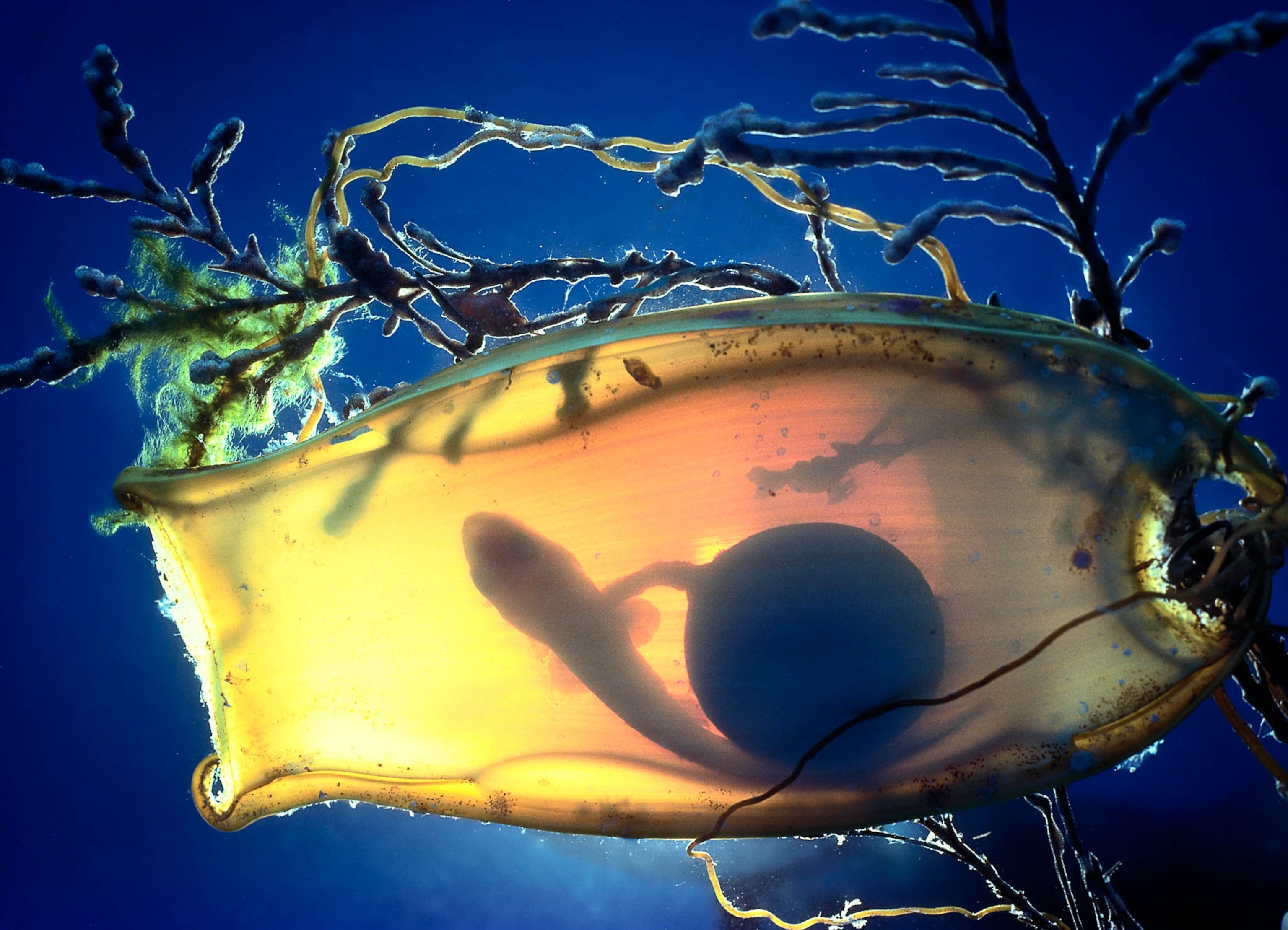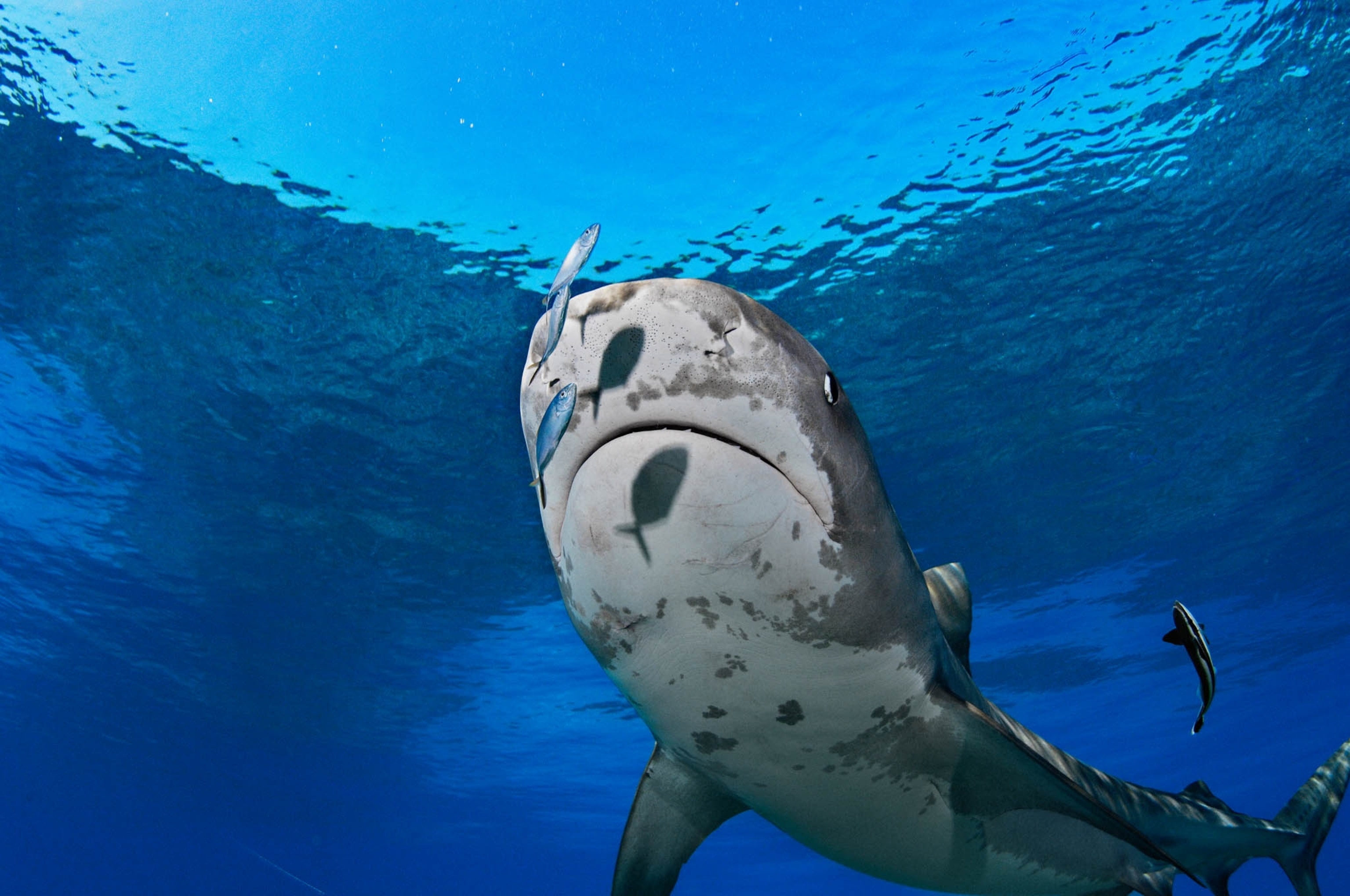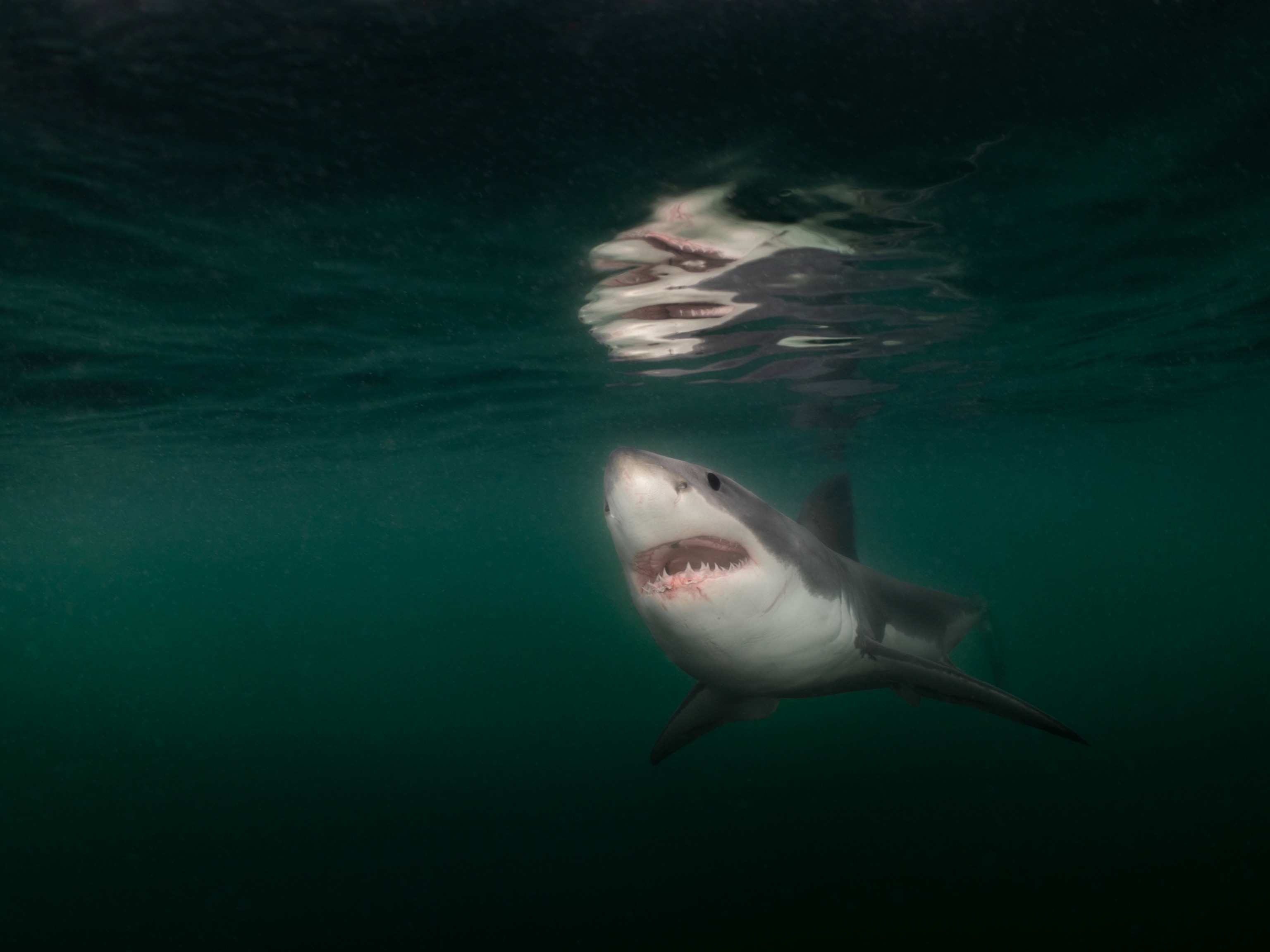How to Rescue a Great White Shark on the Beach
For starters, keep it wet and oxygenated, says a marine expert who recently helped resuscitate a stranded fish on Cape Cod.
After a string of shark attacks in the U.S. in recent weeks, the tide has turned.
On Monday, people came to the aid of a great white shark that stranded itself on a beach in Chatham, Massachusetts. Videos shot during the rescue show experts keeping the seven-foot (two-meter) fish wet and then dragging it back into the ocean with a rope. Though the team was able to resuscitate the fish from a boat, it's unknown whether it survived.
Greg Skomal, a shark scientist with the Massachusetts Division of Marine Fisheries who was involved in the rescue effort, says he's never seen a stranded great white in over 30 years. There's recent evidence that the species are slowly rebounding in Atlantic waters off the U.S. East Coast.
When he first heard about a beached shark, Skomal expected to see a basking shark, which wash onto New England shores every few years. Because they feed exclusively on plankton, basking sharks wander too close to shore and get stuck in the tide's ebb and flow.
Skomal thinks this great white was probably preying on a dead seal, and when the high tide shifted, it panicked. "The shark was at the wrong place at the wrong time and ended up high and dry." (See National Geographic's great white shark pictures.)
Despite its rarity, scientists follow a pretty standard protocol when dealing with beached sharks, Skomal says.
Saving a Shark
The first step in saving a shark is tossing water on its body, which keep tissues alive and gills pumping. In this case, the great white struggled to breathe for up to an hour.
He doesn't know how long a shark can survive out of water, but if its gills are dry, it's not breathing. "That will result in death fairly quickly," he says.
After a harbormaster tied a rope around the great white's tail, a boat pulled the shark into shallow waters, where it appeared lifeless. "I thought it was dead," Skomal says.
Even so, Skomal moved its tail back and forth to prevent rigor mortis and circulate oxygenated blood. Since that didn't provoke a response, the only way to revive it was to pull the animal forward. "You want water to pass into its mouth and over its gills," Skomal says. "That will provide oxygen." (Also see "Watch People Rescue Entangled Swans—How Did It Happen?")
The rescue team, which dragged the shark alongside their boat for over 15 minutes, was devising an autopsy plan when the fish suddenly started to swim forward.
Shark's Fate a Coin Toss
Although it grew progressively stronger, Skomal says the great white's chance of survival is as likely as a coin toss, but he'll find out Friday, when he retrieves data on a tracking device that he attached to the shark during its rescue.
Even if it didn't live, Skomal applauds the team effort behind the rescue, which inspired cheers from dozens of beachgoers.
He adds that if anyone comes across a stranded shark that's still alive, the first step is always to call local professionals. Then if possible, try to identify the species without getting too close. (Find out what you should know about shark attacks).
After all, even sharks deserve some love.
See 10 Chilling Shark Pictures
Follow Greta Weber on Twitter.















